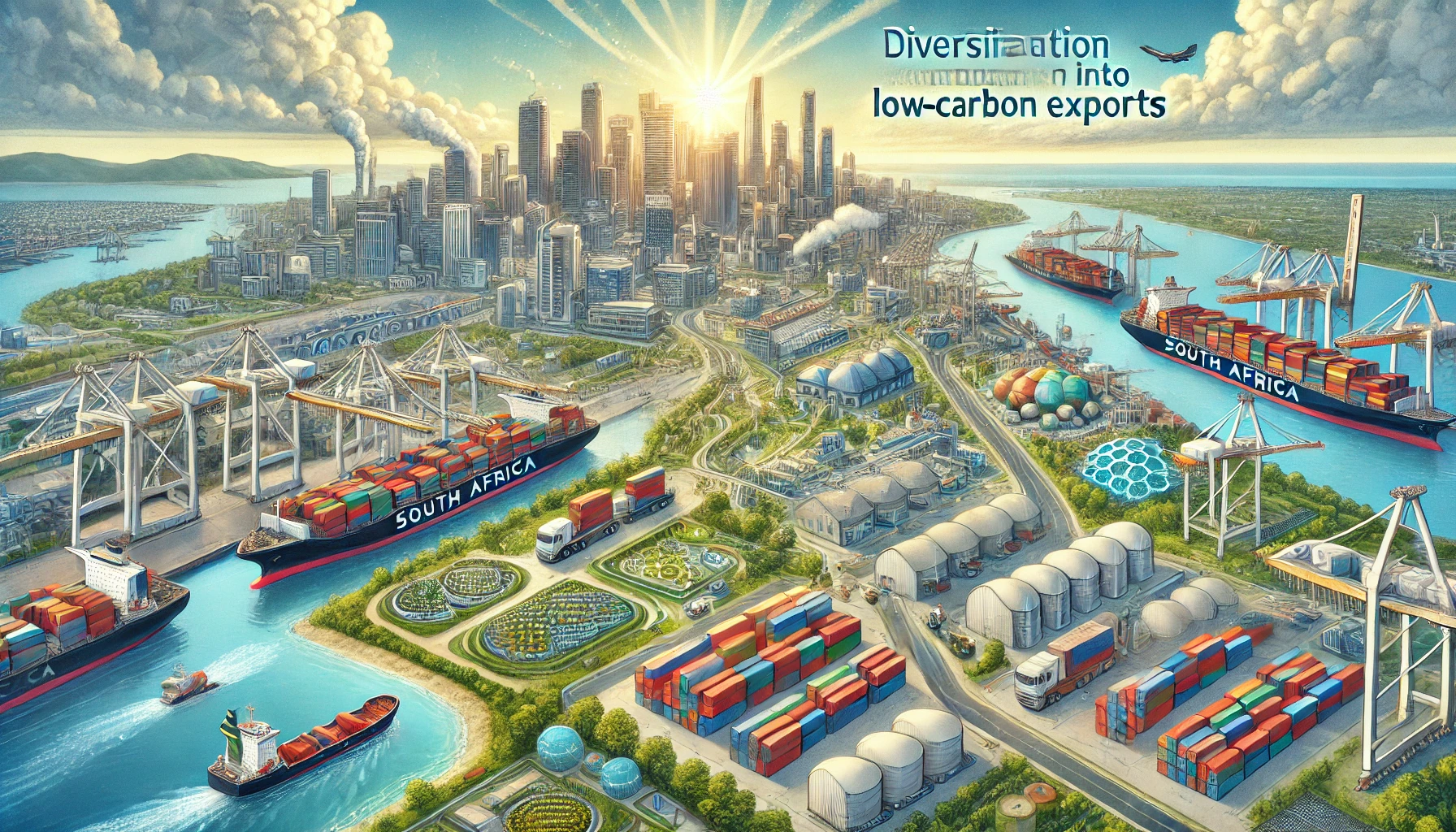From Stagnation to Growth: South Africa's Trade Strategy for a Resilient Economy
The World Bank report emphasizes that South Africa can revitalize its economy and build resilience through an export-oriented strategy, requiring significant reforms in trade policies, infrastructure, and firm capabilities. Leveraging opportunities like the African Continental Free Trade Area (AfCFTA) could diversify exports, enhance competitiveness, and drive inclusive growth.

A report by the World Bank delves into the critical role trade can play in boosting South Africa's economic growth and resilience. Over the past decade, South Africa has faced several structural challenges that have constrained its economic performance, including sluggish productivity growth, declining investment, and inefficiencies in key state-owned enterprises. These issues have collectively hindered the country's export performance, contributing to a broader economic stagnation. The COVID-19 pandemic further exacerbated these challenges, as global supply chains were disrupted, and demand for South Africa's key exports weakened.
A Path Forward: Export-Oriented Strategy
The report suggests that adopting an export-oriented strategy could be vital for South Africa to revitalize its economy, create jobs, and build resilience against future economic shocks. However, this strategy requires substantial reforms across several areas, including trade facilitation, industrial policy, and enhancing the capabilities of local firms to export. The African Continental Free Trade Area (AfCFTA) presents a significant opportunity for South Africa to diversify its exports and strengthen its regional trade relationships. The implementation of AfCFTA could increase South Africa’s income by 3.8 percent by 2035, as it would provide a broader market for South African goods and services, thereby reducing the country's vulnerability to external shocks.
Balancing Global Integration with Local Development
The report also highlights that South Africa's current trade and industrial policies, which focus heavily on localization and import substitution, may undermine the country's export competitiveness. While these policies aim to reduce dependence on external partners and boost local industries, they could also result in higher production costs and limit the country's ability to integrate into global value chains. This could ultimately stifle innovation and reduce the competitiveness of South African exports on the global market. Instead, the report advocates for a more balanced approach that considers the benefits of global integration while supporting local development. One of the key recommendations is to modernize South Africa's trade policy and market access framework. This includes making the most of new trade agreements, such as AfCFTA, and exploring opportunities for diversification, particularly in the trade of environmental goods and services. The report suggests that South Africa has the potential to become a leader in exporting low-carbon technologies and products, which could not only enhance its trade competitiveness but also support global efforts to combat climate change.
Improving Infrastructure and Reducing Trade Barriers
Another critical area for reform is trade facilitation and addressing non-tariff barriers. The report emphasizes the need for investments in infrastructure, particularly in ports, road, and freight logistics, to reduce the cost of trade and improve the efficiency of South Africa’s export sector. Improving trade facilitation processes, such as developing a National Single Window for trade-related procedures, could also help reduce red tape and lower the costs for exporters. Moreover, the report underscores the importance of supporting the capabilities of South African firms to become successful exporters. This involves improving access to information on trade regulations and opportunities, enhancing access to trade finance for small and medium-sized enterprises (SMEs), and promoting foreign direct investment (FDI) in key sectors. By strengthening the capabilities of local firms, South Africa can ensure that more businesses can take advantage of the opportunities provided by global trade.
Mitigating Adverse Impacts and Ensuring Inclusivity
The report also acknowledges that while increasing trade integration can bring significant benefits, it can also lead to adverse impacts on certain sectors and individuals. To mitigate these negative effects, the report suggests that South Africa’s economic policies should include social, education, and labor market reforms that support workers in transitioning to more dynamic sectors. This could involve reskilling programs, income protection measures, and other initiatives designed to help workers adapt to the changing economic landscape. Furthermore, the report calls for a coordinated effort across government agencies to implement these reforms effectively. This would require strong leadership and collaboration between various stakeholders, including the private sector and labor unions, to ensure that the proposed policies lead to tangible improvements in South Africa’s trade performance and overall economic resilience.
A Shared Vision for a Prosperous Future
The World Bank’s report outlines a comprehensive strategy for South Africa to unlock its trade potential and drive inclusive economic growth. By addressing structural constraints, modernizing trade policies, and enhancing the capabilities of local firms, South Africa can better leverage trade as a tool for economic development. However, the success of this strategy will depend on the government’s ability to implement the necessary reforms in a coordinated and effective manner. With the right approach, South Africa can overcome its current economic challenges and achieve a more prosperous and resilient future.
- FIRST PUBLISHED IN:
- Devdiscourse
ALSO READ
World Bank Releases Policy Notes to Guide Mongolia’s Sustainable Development and Economic Diversification
World Bank's Boost for Delhi's Urban Transit Future: A New Collaboration with NCRTC
GTRI Criticizes World Bank's Call for India to Join RCEP
World Bank Revises India's Growth Forecast to 7%
World Bank Allocates $65 Million for Serbia's Railway Infrastructure Modernization










